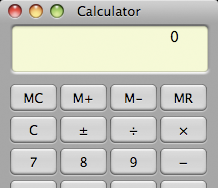 The key to weight loss is burning more calories than you consume. You can achieve this through consuming fewer calories and through burning more calories by exercising.
The key to weight loss is burning more calories than you consume. You can achieve this through consuming fewer calories and through burning more calories by exercising.You can aid your efforts by counting calories in a food diary, to increase your awareness of what you eat and to make certain that you stay under the number of calories your body needs each day to maintain its weight.
But wait.
How do you know how many calories that is?!
That is where today's concept, basal (or resting) metabolic rate, enters the picture. Here's a quick definition from the Mayo Clinic web site:
Even when your body is at rest, it requires energy for the basics, such as fuel for organs, breathing, circulating blood, adjusting hormone levels, plus growing and repairing cells. Calories expended to cover these basic functions are your basal metabolic rate (BMR). Typically, a person's BMR is the largest portion of energy use, representing two-thirds to three-quarters of the calories used each day. Energy needs for these basic functions stay fairly consistent and aren't easily changed.
Basically, your BMR is the number of calories you would burn sitting on your butt doing nothing (and eating nothing) all day. Just being alive takes a lot of work, which is why it's possible for people to lose weight without exercise, why you turn all emaciated when you become ill and stop eating, and why you feel hungry even after hours of rest.
A big myth about BMR is that some people have high rates and thus are "naturally thin" while the rest of us with weight to lose have low metabolisms. While it would be comforting to believe your body size is in no way your own fault, unfortunately it's not true.
A couple factors affect your BMR:
1. Your height and weight. The bigger you are, the more calories your body needs to keep on breathing. It might seem unfair that tall people can eat more food without gaining weight than short people, but they are just as likely to overshoot the "full" mark and gain weight. It just takes them a few more bites to get that bloated feeling.
Concurrently, it's important to keep this factor in mind if you're losing weight as part of a group or partnership. A 1400-calorie diet might work well for an average woman who wants to drop pounds slowly, but it would be a dangerous crash diet for a tall, heavy man.
2. Your muscle tone. Muscle does burn more calories at rest than fat. Thus, regular strength-building exercise makes it a lot easier to maintain the weight loss you achieve through cutting calories.
Muscle tone also explains why other factors, such as gender and age, seem to affect our ability to achieve a healthy weight. Women generally have a higher body-fat percentage than similarly active men because the reproductive system requires it. Also, we lose muscle tone as we age -- though this may largely be because we move less the older we get, and so we aren't maintaining what we have.
All the more reason to exercise!
To determine how many daily calories you should shoot for in your weight-loss plan, you need to add your basal metabolic rate (as determined by your height, weight, and muscle tone/body-fat percentage) to the number of calories it takes your body to process the food you eat (a small percentage that isn't affected much by, say, all the celery you eat) and an estimate of the number of calories you burn through regular exercise.
Whew, that was a lot. Luckily, online calculators can do it all for you.
One tip: Don't overestimate the number of calories you burn through exercise. The total is usually lower than the display on your gym equipment indicates due to all those same factors that affect your BMR. Plus, you have to keep in mind that you'd be burning some of those calories anyway just by being alive during that 30 minutes. Exercise is for long-haul health, not short-term snacking permission.
Now, go forth and calculate!
Technorati Tags:diet, dieting, nutrition, weight loss




No comments:
Post a Comment